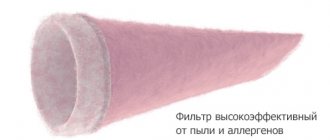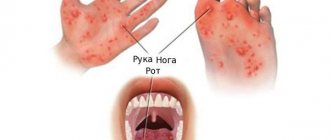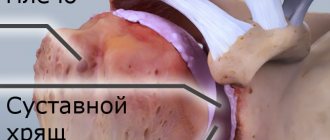Malaria is caused by parasites of the genus Plasmodium. These parasites are transmitted to humans through the bites of infected female Anopheles mosquitoes, which are called "malaria vectors." There are five species of parasites that cause malaria in humans, and two of these species, P. falciparum and P. vivax, are the most dangerous.
- In 2021, P. falciparum was estimated to account for approximately 99.7% of malaria cases in the WHO African Region, 50% of cases in the WHO South-East Asia Region, 71% of cases in the Eastern Mediterranean Region and 65% in the Western Region. parts of the Pacific Ocean.
- P. vivax is the predominant parasite in the WHO Region of the Americas, where it accounts for 75% of malaria cases.
Symptoms
Malaria is an acute febrile disease. In a person who is not immune, symptoms usually appear 10 to 15 days after being bitten by an infected mosquito. The first symptoms—fever, headache, and chills—may be mild, making malaria difficult to detect. If treatment is not started within the first 24 hours, P. falciparum malaria can develop into a severe illness that is often fatal.
Children with severe malaria often develop one or more of the following symptoms: severe anemia, respiratory failure due to metabolic acidosis, or cerebral malaria. Adults also often experience multiple organ failure. In areas where malaria is endemic, people may develop partial immunity, in which infections occur without symptoms.
Symptoms of malaria
1-4 weeks after infection, symptoms appear that have a certain cyclic pattern - exacerbation is replaced by improvement. The most typical symptoms are the sequential appearance of chills, heat and sweat. The temperature rises to 40-41 degrees and lasts for 5-8 hours. After the attack, the temperature drops sharply, severe fatigue sets in and the patient falls into deep sleep.
At the same time, the following may appear:
- aching pain and aches in bones and joints;
- unbearable headache;
- heaviness in the right and left hypochondrium;
- nausea, vomiting, diarrhea;
- interruptions in heart function;
- excitement, delirium, convulsions;
- loss of consciousness.
Due to the destruction of red blood cells (hemolytic anemia), jaundice occurs within 2-3 weeks with yellowing of the skin and sclera of the eyes, and urine and feces do not change color or darken.
Untreated malaria infection is deadly, especially for children and pregnant women. Complications of malaria: coma, cerebral edema, splenic rupture, renal failure, mental disorders.
Who is at risk?
In 2021, nearly half the world's population was at risk of malaria. Most malaria cases and deaths occur in sub-Saharan Africa. However, WHO regions such as South-East Asia, the Eastern Mediterranean, the Western Pacific and the Americas are also at risk.
The risk of contracting malaria and developing severe disease is significantly higher among some groups of the population. These groups include infants, children under five years of age, pregnant women and people with HIV/AIDS, as well as non-immune migrants, mobile populations and travelers. National malaria control programs need to take special measures to protect these populations from malaria infection, taking into account their specific circumstances.
Treatment of malaria
If a malaria infection is suspected, therapy can be started without confirming the diagnosis if the patient lives in an area with a high risk of infection or has returned from a trip to such a country, as well as if it is impossible to conduct laboratory tests.
Once the diagnosis is confirmed, treatment is aimed at interrupting the life cycle of the parasite in the body, preventing severe complications in the patient and death. The specific therapeutic approach depends on the identified pathogen and stage of infection, as well as the individual characteristics of the patient (chronic or concomitant diseases, immune status, pregnancy in women, lack of response to antimalarial drugs).
To achieve maximum effect, combination therapy is used. The main drugs for malaria include artemisinin derivatives, quinine or its derivative chloroquinine, combined with primaquine. For quartan malaria, primaquine is not prescribed due to the resistance of its causative agent to this drug. Severe tropical malaria can be treated with artesunate, artemether and quinine, and if these are not available, quinidine injection under ECG monitoring. Complications of the disease are treated according to generally accepted regimens.
To prevent relapses and if the pathogen is sensitive, the patient is prescribed long-term use of primaquine after discharge.
Burden of disease
According to the latest edition of the World Malaria Report, released in November 2021, 229 million people worldwide fell ill with malaria in 2021, up from 228 million in 2018. An estimated 409,000 people died from malaria in 2021 up from 411,000 in 2021
The WHO African Region continues to bear a disproportionate share of the global malaria burden. In 2019, the region accounted for 94% of all malaria cases and deaths.
In 2021, approximately half of all malaria deaths worldwide occurred in six countries: Nigeria (23%), Democratic Republic of the Congo (11%), United Republic of Tanzania (5%), Burkina Faso (4%), Mozambique ( 4%) and Niger (4%).
Children under five years of age are especially susceptible to malaria; in 2021, they accounted for 67% (274,000) of all malaria deaths worldwide.
- World Malaria Report 2021 – in English
How does malaria manifest?
Symptoms of malaria can take as long as a week or a month to appear. The infected person complains of:
- feeling of weakness;
- increased sweating;
- feverish condition;
- headache.
At first, the symptoms are mild, but over time the condition worsens.
The main symptom of malaria is the cyclical nature of symptoms. The acute phase lasts from six to ten hours, then the condition improves for a period of two to five hours. When the severity of symptoms decreases, the person sleeps deeply. After two or three days, exacerbation begins again.
The disease can also be suspected if:
- aches in joints;
- loose stools;
- temperature increase;
- enlarged spleen and liver;
- anemia;
- attacks of nausea and vomiting;
- failures of cardiac activity.
The first signs of malaria are a reason to immediately consult a doctor; the disease cannot be treated at home, as it can be fatal.
Transmission of infection
Most cases of malaria are transmitted through the bites of female Anopheles mosquitoes. There are over 400 different species of Anopheles mosquitoes; about 30 species are significant vectors of malaria. All significant vector species bite at dusk and dawn. The intensity of transmission depends on factors related to the parasite, the vector, the human host and the environment.
Anopheles mosquitoes lay eggs in water, which hatch into larvae that eventually develop into adult mosquitoes. Female mosquitoes need blood to lay eggs. Each Anopheles mosquito species has its own aquatic habitat; some, for example, prefer small, shallow accumulations of fresh water, such as puddles and hoof marks, which are abundant during the rainy season in tropical countries.
Transmission occurs more intensely in places where mosquitoes have a longer lifespan (giving the parasite enough time to complete its development in the mosquito) and where the vector prefers to bite people rather than animals. For example, the long lifespan of African vector species and the fact that they consistently prefer to bite humans are the main reasons why approximately 90% of all malaria deaths occur in Africa.
Transmission of infection also depends on climate features, such as rainfall patterns, temperature and humidity, which also affect the number and survival of mosquitoes. In many places, transmission is seasonal and peaks during and immediately after the monsoon seasons. Malaria epidemics can occur when climatic and other conditions suddenly become favorable for transmission in areas where people have little or no immunity to malaria. In addition, epidemics can occur when people with weak immune systems enter areas with intense malaria transmission, for example to seek work or as refugees.
Another important factor is human immunity, especially among adults in areas with moderate to intense transmission. Partial immunity develops over several years of exposure, and although it never provides complete protection, it reduces the risk of developing severe illness in the event of a malaria infection. For this reason, most malaria deaths in Africa occur among young children, while in areas with less intense transmission and low immunity, all age groups are at risk.
Malaria
Malaria (Middle Ages Italian. mala aria - “bad air”, previously known as “swamp fever”) is a group of vector-borne infectious diseases transmitted to humans through the bites of mosquitoes of the genus Anopheles (“malaria mosquitoes”) and accompanied by fever, chills, splenomegaly (increased size of the spleen), hepatomegaly (increase in liver size), anemia. Characterized by a chronic relapsing course.
Every year, 350-500 million cases of malaria infection are recorded, of which 1.3-3 million result in death. 85-90% of cases of infection occur in sub-Saharan Africa; the vast majority of infections occur in children under 5 years of age.
Story
It is believed that people have been suffering from malaria for 50,000 years. Malaria is believed to be native to West Africa (P. falciparum) and Central Africa (P. vivax). Molecular genetic evidence suggests that the preparasitic ancestor of Plasmodium was a free-living protozoan capable of photosynthesis that adapted to live in the intestines of aquatic invertebrates. It could also live in the larvae of the first blood-sucking insects of the order Diptera, which appeared 150-200 million years ago, quickly acquiring the ability to have two hosts. The oldest mosquito fossils found containing remains of malaria parasites are 30 million years old. With the advent of humans, malaria parasites evolved that were capable of changing hosts between humans and mosquitoes of the genus Anopheles.
Finding out the cause of the disease
In 1880, the French military doctor Charles Louis Alphonse Laveran, working in Algeria, discovered a living single-celled organism in the blood cells of a malaria patient. A year later, the scientist published an article in the medical press, “The parasitic nature of the malaria disease: a description of a new parasite found in the blood of malaria patients.” This was the first time that protozoa were identified as the cause of disease. For this and other discoveries he was awarded the Nobel Prize in Physiology or Medicine in 1907. The genus name of the parasite Plasmodium was proposed in 1895 by Italian scientists Ettore Marchiafava and Angelo Celli.[10] In 1894, parasitologist Patrick Manson first suggested that malaria could be transmitted to humans by mosquitoes. In 1896, the Cuban doctor Carlos Finlay, who treated yellow fever patients in Havana, expressed the same hypothesis. The Englishman Sir Ronald Ross, working in India, showed in 1898 that certain species of mosquitoes transmit malaria to birds, and isolated parasites from the salivary glands of the mosquito. He also managed to find parasites in the intestines of mosquitoes that fed on the blood of sick people, but was unable to trace the transmission of parasites from mosquitoes to humans. In 1898, Giovanni Batista Grassi managed to experimentally infect a person with malaria through a mosquito bite (he experimented on volunteers, including himself). He also proved that only mosquitoes of the genus Anopheles are carriers of malaria in Italy, and developed and implemented measures for the prevention of malaria. However, in 1902, only Ronald Ross received the Nobel Prize in Medicine for describing the life cycle of the malaria parasite. The data obtained by Finlay and Ross were confirmed in 1900 by the medical council, headed by Walter Reed. The recommendations of this council were used by William C. Gordas for the health measures carried out during the construction of the Panama Canal.
At the beginning of the 20th century, before the discovery of antibiotics, it was common practice to deliberately infect patients with syphilis with malaria. Malaria provided an increased body temperature, at which syphilis, if it did not go away completely, then in any case reduced its activity and entered the latent stage. By controlling the course of fever with quinine, doctors thus tried to minimize the negative effects of syphilis. Although some patients died, this was considered preferable to the inevitable death from a syphilitic infection.
Discovery of the resting stage of the parasite
Although the stages of the parasite's life cycle, which take place in the human bloodstream and in the body of a mosquito, were described back in the late 19th and early 20th centuries, it was only in the 1980s that the existence of a resting stage became known. The discovery of this form of the parasite finally explained how people who had recovered from malaria could become ill again years after the Plasmodium cells had disappeared from the bloodstream.
Area
Malaria mosquitoes live in almost all climatic zones, with the exception of the subarctic, arctic zones and deserts. In Russia, they live throughout the European territory of the country and in Western Siberia, except for polar and subpolar latitudes. They do not live in Eastern Siberia: the winters there are too harsh, and mosquitoes do not survive.
However, in order for there to be a risk of malaria infection, in addition to malaria mosquitoes, conditions are required for their rapid reproduction and transmission of malarial plasmodium. Such conditions are achieved in areas where there are no low temperatures, there are swamps and there is a lot of rainfall. Therefore, malaria is most widespread in the equatorial and subequatorial zones.
Also, the natural habitat of malaria includes the humid subtropical zone: for example, in the Sochi region, malaria at the beginning of the 20th century was a big problem before measures were taken to drain wetlands, oil reservoirs and carry out other measures that ultimately led to the destruction of breeding grounds for malaria mosquitoes in the resort area .
In Russia and the USSR, until the early 1950s, the incidence of malaria was widespread, not only in the Caucasus, Transcaucasia and Central Asia, but also in the central European part (Volga region and other regions). The absolute number of cases peaked in 1934–1935, when more than 9 million cases of malaria were recorded.
Etiology
The causative agents of malaria are protozoa of the genus Plasmodium (plasmodia). Four species of this genus are pathogenic for humans: P.vivax (English), P.ovale (English), P.malariae (English) and P.falciparum. In recent years, it has been established that a fifth species, Plasmodium knowlesi, also causes malaria in humans in Southeast Asia. A person becomes infected with them at the time of inoculation (injection) by a female malaria mosquito of one of the stages of the life cycle of the pathogen (the so-called sporozoites) into the blood or lymphatic system, which occurs during blood sucking.
The erythrocyte, or clinical stage of malaria begins with the attachment of merozoites that have entered the blood to specific receptors on the surface of the erythrocyte membrane. These receptors, which serve as targets for infection, appear to be different for different types of malarial Plasmodium.
Plasmodium, entering the victim, stimulates the release of substances that are attractive to mosquitoes. Researchers came to this conclusion when they conducted a series of experiments on mice. Malaria parasites changed the body odor of mice, and this odor became especially “attractive” during the period of their (the parasites) full maturation.
Symptoms and diagnosis
Symptoms of malaria typically include fever, chills, arthralgia (joint pain), vomiting, anemia due to hemolysis, hemoglobinuria (excretion of hemoglobin in the urine), and convulsions. There may also be a tingling sensation in the skin, especially in the case of malaria caused by P. falciparum. Splenomegaly (enlarged spleen), unbearable headache, and cerebral ischemia may also be observed. Malaria infection is deadly. Children and pregnant women are especially vulnerable.
Diagnosis is made by identifying parasites in blood smears. Traditionally, two types of smears are used - thin and thick (or the so-called “thick drop”). A thin smear makes it possible to more reliably determine the type of malarial plasmodium, since the appearance of the parasite (the shape of its cells) is better preserved with this type of research. A thick smear allows the microscopist to view a larger volume of blood, making this method more sensitive, but it changes the appearance of the plasmodium, making it difficult to distinguish between plasmodium species. Making a diagnosis based on microscopic examination is often difficult, since immature trophozoites of different types of falciparum plasmodium are poorly distinguishable, and several plasmodia at different stages of maturation are usually necessary for a reliable differential diagnosis.
Currently, rapid diagnostic tests (RDT, Rapid Diagnostic Tests) are also used using immunochemical kits (more expensive, but give results in 5-15 minutes and do not require the use of a microscope) and PCR tests (the most expensive, but most reliable)
Types (forms) of malaria
The symptoms, course and prognosis of the disease partly depend on the type of plasmodium, which is the causative agent of this form of the disease.
- The causative agent of tropical malaria is P. falciparum. Causes the most dangerous form, often accompanied by complications and a high mortality rate. This form is also the most widespread (91% of all malaria cases in 2006).
- The causative agent of four-day malaria is Plasmodium malariae. Attacks usually occur within 72 hours.
- The causative agents of three-day malaria and the similar oval malaria are Plasmodium vivax and Plasmodium ovale, respectively. Attacks occur every 40-48 hours.
These forms of malaria also differ in the duration of the incubation period, the duration of different stages of the life cycle of plasmodium, symptoms and course.
Antimalarial immunity
The immune response against malaria infection develops slowly. It is characterized by low efficiency and practically does not protect against re-infection. Acquired immunity develops after several malaria infections over several years. This immunity is specific to the stage of the disease, to the species, and even to a specific strain of Plasmodium falciparum. But clinical manifestations and symptoms decrease with the development of specific antimalarial immunity.
Possible explanations for this weak immune response include the presence of Plasmodium falciparum in cells during most of its life cycle, general suppression of the immune system, the presence of antigens that are not recognized by T cells, suppression of B cell proliferation, significant polymorphism of Plasmodium falciparum and rapid change of potential antigens on its surface.
Treatment
The most common drug used to treat malaria today, as before, is quinine. For some time it was replaced by chloroquine, but has now regained popularity. The reason for this was the appearance in Asia and then spread throughout Africa and other parts of the world of Plasmodium falciparum with a mutation of resistance to chloroquine.
There are also several other substances that are used to treat and sometimes prevent malaria. Many of them can be used for both purposes. Their use depends primarily on the resistance of parasites in the area where one or another drug is used.
Currently, the most effective drugs for treatment are drugs combined with artemesinin. WHO resolution WHA60.18 (May 2007) insists on the use of these drugs, but they are still not registered and are not used in the Russian Federation.
| Essential antimalarial drugs | ||||
| A drug | English Name | Prevention | Treatment | Notes |
| Artemether-lumefantrine | Artemether-lumefantrine | — | + | commercial name Coartem |
| Artesunate-amodiaquine | Artesunate-amodiaquine | + | — | |
| Atovaquone-proguanil | Atovaquone-proguanil | + | + | commercial name Malarone |
| Quinine | Quinnine | — | + | |
| Chloroquine | Chloroquine | + | + | after the emergence of resistance, use is limited commercial name Delagil |
| Cotriphazide | Cotrifazid | + | + | |
| Doxycycline | Doxycycline | + | + | |
| Mefloquine | Mefloquine | + | + | commercial name Lariam |
| Proguanil | Proguanil | — | + | |
| Primaquin | Primaquine | + | — | |
| Sulfadoxine-pyrimethamine | Sulfadoxine-pyrimethamine | + | + | commercial name Fansidar |
Extracts of the plant Artemisia annua (Artemisia annua), which contain the substance artemisinin and its synthetic analogues, are highly effective, but their production is expensive. Currently (2006) the clinical effects and the possibility of producing new drugs based on artemisinin are being studied. Other work by a team of French and South African researchers developed a group of new drugs known as G25 and TE3, which were successfully tested in primates.
Although anti-malarial drugs are available on the market, the disease poses a threat to people who live in endemic areas where there is no adequate access to effective drugs. According to Doctors Without Borders, the average cost of treating a person infected with malaria in some African countries is only $0.25 to $2.40.
Prevention
Methods that are used to prevent the spread of the disease or for protection in areas where malaria is endemic include preventative medications, mosquito control, and mosquito bite prevention products. There is currently no vaccine against malaria, but active research is underway to create one.
Vaccine development
Development of malaria vaccines is underway and clinical trials have begun.
In March 2013, after a series of unsuccessful experiments, US scientists successfully tested a fast-acting anti-malaria drug on mice; the new drug is being prepared for testing in humans.
Malaria has always been and remains one of the most dangerous human diseases. Famous people who have died from malaria include: Alexander the Great, Alaric (King of the Visigoths), Genghis Khan, St. Augustine, at least 5 popes, the Italian poet Dante, Holy Roman Emperor Charles V, Christopher Columbus, Oliver Cromwell, Michelangelo Merisi Caravaggio, Lord Byron and many others.
Current data on malaria:
- 2.4 billion people, or 34% of the world's population, live in malaria-prone areas.
- Every year, 300-500 million people become infected with malaria, and according to WHO, this number is increasing by 16% annually. 90% of cases are reported in Africa, with the remaining 70% of cases occurring in India, Brazil, Sri Lanka, Vietnam, Colombia and the Solomon Islands.
- Every year, 1.5-3 million people die from malaria (15 times more than from HIV/AIDS).
- Over the past decade, from third place in the number of deaths per year (after pneumonia and tuberculosis), malaria has become the first among infectious diseases.
- Every year, about 30,000 people visiting dangerous areas become ill with malaria, of whom 1% die.
Prevention
The main way to prevent and reduce malaria transmission is vector control. Sufficiently high coverage of a particular area with vector control measures provides some protection from infection to the entire population of the area.
To protect all people at risk of malaria, WHO recommends effective vector control measures. To do this, two methods can be effectively used in a wide variety of conditions - insecticide-treated mosquito nets and spraying residual insecticides indoors.
Insecticide treated mosquito nets
The use of insecticide-treated mosquito nets (ITNs) during sleep may reduce the likelihood of mosquito-human contact through both the presence of a physical barrier and exposure to the insecticide. Mass eradication of mosquitoes in areas where such nets are widely available and actively used by local residents can provide protection to the entire population.
In 2021, insecticide-treated nets in Africa protected about 46% of all people at risk of malaria, up from 2% in 2000. However, ITN coverage has shown little growth since 2021.
Spraying residual insecticides indoors
Another effective way to rapidly reduce malaria transmission is indoor residual spraying (IRID). Insecticide spraying inside residential areas is carried out once or twice a year. To achieve effective protection of the population, a high level of RIODVP coverage must be ensured.
Globally, the rate of use of RADI for protection has decreased from a peak of 5% in 2010 to 2% in 2021 in all WHO regions except the Eastern Mediterranean Region. The decline in MRV coverage occurs as countries shift from using pyrethroid pesticides to more expensive alternatives to address pyrethroid resistance in mosquitoes.
Preventive measures
To avoid contracting malaria, persons who travel to areas with unfavorable epidemiological conditions must take special medications:
- Chloroquine. Adults - 14 days before departure, 300 mg once a week. It is necessary to continue taking it for another 4-6 weeks after returning. Children are prescribed at the rate of 5 mg per 1 kg of body weight per week, the course of administration is similar to adults;
- Mefloquine. Adults - 7 days before departure and another four weeks after return. Dosage – 250 mg once a week. In children, the dosage depends on weight: from 15 to 19 kg - 0.25 tablets, from 20 to 30 kg - 0.5 tablets, from 31 to 45 kg - 0.75 tablets, over 45 kg - 1 piece.
If there are contraindications to taking special medications, then you can take Doxycyline at a dosage of 100 mg. One dose per day is enough, one or two days before departure and for a month after returning.
You should avoid mosquito bites and use protective equipment - creams, aerosols, mosquito nets.
Antimalarial drugs
Antimalarial drugs can also be used to prevent malaria. Prevention of malaria among travelers can be achieved through chemoprophylaxis, which suppresses the blood stage of malaria infection, thereby preventing the disease from developing. Among pregnant women living in areas of moderate to intense transmission, WHO recommends at least 3 doses of intermittent sulfadoxine-pyrimethamine prophylaxis at each scheduled antenatal visit after the first trimester of pregnancy.
Similarly, intermittent preventive therapy with three doses of sulfadoxine-pyrimethamine as part of routine vaccination is recommended for infants living in areas of Africa with high transmission rates.
Since 2012, WHO has recommended seasonal malaria chemoprophylaxis in areas of the Sahel subregion as an additional malaria prevention strategy. This strategy involves administering monthly courses of amodiaquine plus sulfadoxine-pyrimethamine to all children under five years of age during the high transmission season.
Diagnostics
When making a diagnosis, take into account:
- main signs (bouts of fever with cyclicity, enlarged liver and spleen, hemolytic anemia);
- the fact of visiting the source of infection, blood transfusion, operations;
- express diagnostics - determination of antibodies to different types of malaria using ICA;
- laboratory diagnostic data: microscopy of a drop of blood (better during fever), antibodies to malarial plasmodium, blood PCR.
Additionally, a general blood test, reticulocytes and biochemical with liver enzymes, bilirubin are recommended). Patients undergo an ultrasound of the abdominal organs and a CT scan of the brain (as indicated).
Insecticide resistance
Since 2000, progress in malaria control has been achieved largely through increased coverage of vector control interventions, particularly in sub-Saharan Africa. However, these achievements are under threat due to the increasing resistance of Anopheles mosquitoes to insecticides. Between 2010 and 2021, cases of mosquito resistance to at least one of the four most common classes of insecticides were reported in 73 countries, according to the latest edition of the World Malaria Report. In 28 countries, mosquito resistance to all major classes of insecticides was observed.
Despite the rise and spread of mosquito resistance to pyrethroids, insecticide-treated nets continue to provide significant levels of protection in most areas of human activity. This was confirmed by the results of a large study coordinated by WHO in five countries between 2011 and 2021.
Despite the encouraging results of this study, WHO continues to reiterate the urgent need for new and improved tools to combat malaria worldwide. WHO also emphasizes the urgent need for all countries where malaria transmission continues to develop and implement effective strategies to combat insecticide resistance to prevent the decline in the effectiveness of the most common vector control tools.
Transmission routes
The main route of transmission is the bite of a malaria mosquito (female). But there are other, rarer ways of infection:
- from infected mother to child;
- when receiving blood from an infected person;
- when injected with a syringe that was previously used by an infected person.
The essence of the disease is that during a bite, parasites - malarial plasmodia - enter the liver through the blood. They destroy red blood cells and continue to multiply, affecting more and more new blood cells.
Diagnosis and treatment
Early diagnosis and treatment of malaria helps reduce the severity of the disease and prevent death. These measures also help reduce the intensity of malaria transmission. The most effective existing treatment regimen, especially for P. falciparum malaria, is artemisinin combination therapy (ACT).
WHO recommends that in all cases of suspected malaria, the diagnosis be confirmed using a diagnostic test to identify the parasite (microscopic examination or rapid diagnostic test) before starting treatment. The period for obtaining parasitological confirmation is up to 30 minutes. The decision to carry out treatment based solely on clinical symptoms can only be made in cases where establishing a parasitological diagnosis is impossible. More detailed recommendations are available in the third edition of the WHO Malaria Treatment Guidelines, published in April 2015.
Diagnosis of malaria
The main task when collecting anamnesis and initial examination of the patient is to recognize signs of infection, establish the risk of infection and its source.
Conduct a set of laboratory tests:
- general blood test, in particular hematocrit (percentage of red blood cells in the blood) and leukocyte formula (allows you to determine the presence of acute or chronic infection);
- light microscopy of blood: a thick smear to detect plasmodium in red blood cells and a thin smear to determine the type of parasite;
- immunological analysis (rapid test): works on the principle of identifying special proteins in the blood - malaria antigens;
- serological analysis reveals antinuclear antibodies to the parasite, which makes it possible to establish not only the current, but also a past infection;
- The polymerase chain reaction (PCR) method is used if previous tests for malaria have not confirmed the diagnosis. The accuracy of detecting infection using PCR is 95%.
It is worth noting that it is difficult to identify parasites in the blood at the first signs of infection, so microscopy should be performed after a few days.
Antimalarial drug resistance
The problem of resistance to antimalarial drugs continues. Resistance of the malaria parasite P. falciparum to previous generations of drugs such as chloroquine and sulfadoxine-pyrimethamine (SP) became widespread in the 1950s and 1960s, weakening efforts to control malaria and erasing gains in child survival rates.
Ensuring the effectiveness of antimalarial drugs is critical to malaria control and elimination. Regular monitoring of drug effectiveness is required to develop treatment strategies for malaria-endemic countries and to ensure timely detection and control of drug resistance.
In 2013, WHO adopted the Greater Mekong Subregion Artemisinin Resistance Emergency Response Plan (ERERP), a comprehensive proactive plan to contain the spread of drug-resistant parasites and provide life-saving supplies to all populations at risk of malaria. However, already in the process of this work, other, independent centers of resilience emerged in other geographical areas of the subregion. In parallel, there have been reports that in some cases the resistance of the infection to “partner” components in artemisinin-combination therapy is increasing. Changing trends in malaria incidence have created a need for a different approach.
At the World Health Assembly in May 2015, WHO adopted the Greater Mekong Subregion Malaria Elimination Strategy (2015–2030), which was endorsed by all countries in the subregion. The strategy aims to eliminate all types of human malaria across the region by 2030 and includes a series of immediate actions, particularly in areas where multidrug-resistant malaria is widespread.
All countries in the subregion, with technical support from WHO, have developed national malaria elimination plans. WHO, together with partners, is providing ongoing support to countries' efforts to eliminate malaria through the Mekong Malaria Elimination Programme, a new initiative that is a continuation of the EMER.
Treatment
Malaria treatment is carried out exclusively in a hospital under the supervision of doctors. The basis of programs when working with patients is the use of quinine. Other drugs are selected depending on the region in question. The fact is that parasites often develop resistance to certain substances - this also applies to antibiotics that are used for symptomatic treatment. Often, along with a general plan, the patient requires an individual approach in order to achieve the highest quality result.
Surveillance
Surveillance involves monitoring cases of disease, systematically responding, and making decisions based on the findings. Currently, many countries with a high malaria burden have weak surveillance systems and are unable to assess the distribution and trends of the disease, making it difficult to optimize responses and respond to outbreaks.
Effective surveillance is needed at all stages of the progress towards malaria elimination. Strengthening malaria surveillance programs is urgently needed to ensure a timely and effective response to malaria in endemic regions, prevent outbreaks and re-emergence of the disease, monitor progress and hold governments and other global actors in the fight against malaria accountable.
In March 2021, WHO released guidance on surveillance, monitoring and evaluation of malaria cases. The guide provides information on global surveillance standards and recommendations for strengthening country surveillance systems.
Why is malaria dangerous?
Malaria is life threatening because it affects various organs and can cause:
- parasitic infection of the body;
- acute impairment of all renal functions;
- heart failure;
- accumulation of fluid in the brain (brain edema);
- mental disorders;
- malarial coma followed by death.
How the disease develops is determined by the type of pathogen. Children under 5 years of age experience the disease more severely than older patients.
Elimination
Malaria elimination is defined as the interruption, through targeted action, of local transmission of a specific species of malaria parasite within a defined geographic area. Preventing resurgence of transmission requires continued efforts. Malaria elimination is defined as the global incidence of malaria caused by human malaria parasites being achieved through targeted action at all times. The fact that malaria has been eliminated eliminates the need for further anti-malarial measures.
Elimination is expanding around the world, and more countries are moving closer to the goal of reducing malaria incidence to zero. In 2021, the number of countries reporting fewer than 100 cases of local transmission was 27, up from 6 in 2000.
Countries that have not reported a single local case of malaria for at least three consecutive years meet the criteria to apply to WHO for malaria elimination certification. Over the past 20 years, 10 countries have been certified as malaria-free by the WHO Director-General: United Arab Emirates (2007), Morocco (2010), Turkmenistan (2010), Armenia (2011), Sri Lanka (2016), Kyrgyzstan (2016), Paraguay (2018), Uzbekistan (2018), Algeria (2019) and Argentina (2018). The WHO Malaria Elimination Framework (2017) provides a comprehensive set of tools and strategies to achieve and sustain elimination.
Malaria screenings
To make a diagnosis in the infectious diseases department:
- are interviewed for complaints;
- blood is taken for general and biochemical analysis;
- smears are examined for the presence of parasites. To do this, blood from a vein and finger is examined;
- urine is taken for general analysis.
As a rule, the first test does not confirm the disease, so blood is taken again after a few hours.
With malaria, the following changes in the composition of the blood will be found:
- decreased hemoglobin levels and red blood cell levels;
- increased concentration of leukocytes and platelets;
- the color index may be reduced or within normal limits.
The urine will contain hemoglobin, blood clots and red blood cells. Blood biochemistry will show an increase in bilirubin, ALT and AST, albumin.
The doctor makes a diagnosis based on information about a person’s stay in regions where swamp fever is widespread, based on characteristic symptoms, and also based on the results of laboratory tests.
Vaccines against malaria
To date, RTS,S/AS01 (RTS,S) is the first and only vaccine demonstrated to significantly reduce the incidence of malaria and life-threatening severe malaria in African young children. It works against P. falciparum, the world's deadliest malaria parasite and the most common in Africa. In a large, four-year clinical trial in children who received four doses of the vaccine, it prevented malaria in 4 out of 10 cases.
Leading WHO advisory bodies on malaria and immunization, given the high public health importance of this vaccine, have jointly recommended its phased introduction in parts of sub-Saharan Africa. In 2021, three countries (Ghana, Kenya and Malawi) began rolling out the vaccine in selected areas with moderate to high intensity malaria transmission. Vaccination is carried out as part of the national routine immunization program of each country.
The vaccine pilot program will provide answers to a number of outstanding questions regarding its use in public health. This will be important in understanding the optimal administration schedule for the four recommended doses of RTS,S; the potential role of vaccines in reducing child mortality; and its safety during routine vaccinations.
The program is being coordinated by WHO, together with the ministries of health of Ghana, Kenya and Malawi, as well as a number of national and international partners, including the non-profit organization PATH and (GSK), the vaccine developer and manufacturer.
Funding for the vaccine development program was provided through a collaboration between three of the world's largest health financing organizations: the Vaccine Alliance GAVI, the Global Fund to Fight AIDS, Tuberculosis and Malaria and UNITAID.
Kinds
There are four types of malaria:
- tropical. It is the most common and dangerous - it causes complications more often than others. More than 90% of cases are of this type;
- four-day. It is named so because acute attacks of the disease most often occur after 72 hours;
- three-day. In this case, attacks will occur more often - on average every 40-48 hours;
- ovale malaria. The cycle of attacks is similar to the previous version.
It is important to understand that after illness and recovery, immunity to re-infection is not developed. Such immunity can develop after a year or after several infections, however, even in this case it is not very effective, since it can only act on certain types of parasites and does not provide complete protection, but only reduces symptoms.
WHO activities
WHO global technical strategy for malaria control 2016–2030.
Adopted by the World Health Assembly in May 2015, the WHO Global Technical Strategy for Malaria Control 2016–2030. sets technical parameters for work in all malaria-endemic countries. It aims to guide and support regional and national programs as they work to control and achieve malaria elimination.
This strategy sets ambitious but achievable global goals, including:
- reducing the incidence of malaria by at least 90% by 2030;
- reducing malaria mortality rates by at least 90% by 2030;
- eliminating malaria in at least 35 countries by 2030;
- preventing the re-emergence of malaria in all malaria-free countries.
The strategy was the result of a broad consultative process over two years involving more than 400 technical experts from 70 Member States.
Global Malaria Program
The WHO Global Malaria Program coordinates WHO's international efforts to control and achieve malaria elimination through:
- developing, communicating and promoting their adoption of norms, standards, policies, technical strategies and guidelines;
- independent assessment of global progress;
- developing approaches to strengthen capacity, improve systems and conduct surveillance;
- identifying factors that threaten effective malaria control and elimination, as well as finding new areas of action.
The Program is supported and advised by a Malaria Policy Advisory Committee (MPAC), composed of malaria experts appointed through open nominations. The mandate of the ACPM is to provide policy advice and technical advice on all aspects of malaria control and elimination through a transparent, flexible and credible rule-making process.
"A heavy burden requires high efficiency"
At the World Health Assembly in May 2021, WHO Director-General Dr Tedros Adhanom Ghebreyesus called for a new proactive approach to accelerate progress in the fight against malaria. A new initiative, High Burdens Call High Performance, implemented with active country participation, was launched in November 2021 in Mozambique.
Currently, 11 countries with the highest burden of disease are participating (Burkina Faso, Cameroon, Democratic Republic of the Congo, Ghana, India, Mali, Mozambique, Niger, Nigeria, Uganda and the United Republic of Tanzania). The main elements of the initiative are:
- mobilizing political will to reduce the burden of malaria;
- providing strategic information to achieve real change;
- improving guidelines, policies and strategies;
- coordinated efforts to combat malaria at the national level.
The High Burden Means High Impact initiative, carried out with the active participation of WHO and the WOM Partnership to End Malaria, is based on the principle that no one should die from a disease that is preventable and diagnosable and completely curable with existing medicines.
How is malaria treated?
Treatment takes place only in inpatient settings. Main directions of therapy:
- the use of special drugs active against the pathogen;
- relief of symptoms;
- slowing down the progression of the disease;
- compliance with the regime.
Medicines are prescribed by the doctor based on the type of disease, its course, and existing resistance. Main groups of drugs:
- protecting red blood cells from plasmodia: Quinine, Chloroquine, Hydroxychloroquine, Primaquine, Mefloquine;
- biguanides (Proguanil);
- tetracyclines;
- sulfonamides (Sulfadoxine);
- terpene lactones and hydroxynaphthoquinones as reserves.
A patient with malaria needs constant care; during chills he is covered, and during fever he is uncovered. Headaches are relieved by applying cold to the forehead. After profuse sweating, a change of underwear is required. To prevent malaria from spreading, the ward must be protected from mosquitoes. Complications and deterioration of the condition are grounds for transferring the patient to intensive care.
A diet with increased fluid intake in the form of fruit drinks, decoctions and juices is required. It is recommended to include eggs, lean meat or fish, pureed porridge, kefir, and honey in the diet.











